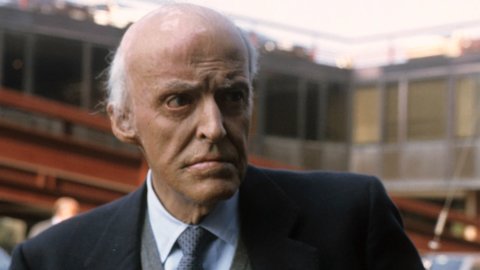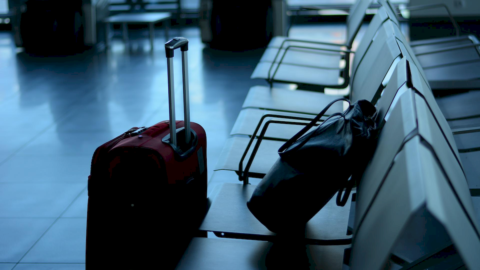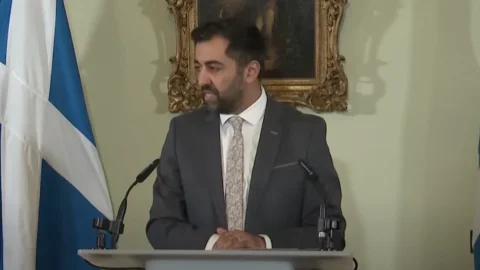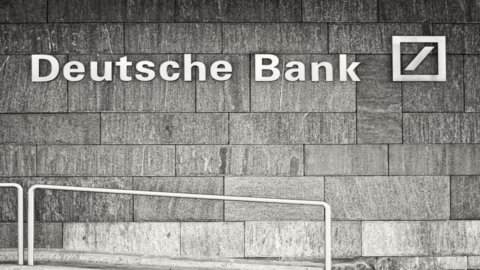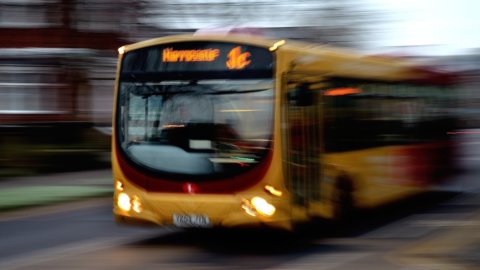Ten years ago today, January 23, Leopoldo Pirelli died. He was 81 years old but since 1999, with the exit from the presidency of Pirelli & C – the Pirellina for the Stock Exchange, then the controlling financial company of Pirelli Spa, the Pirellona – he had abandoned every position in the family group.
On the same days four years earlier, on January 24, Gianni Agnelli had also left, almost as if fate had wanted to bring together for the last time even in the farewell to life, the two protagonists of the great private industry of the post-war period, the Lawyer and the Engineer, undisputed leaders of half a century of Italian capitalism linked by thread double to Enrico Cuccia's Mediobanca.
It was 1965 when Leopoldo Pirelli rose to the presidency, but it was from 1959, then 34 years old, that he had joined his father Alberto as vice president, struck by an illness and who will die in 1971. Of great grace and extraordinary culture, when he inherited the group founded by his grandfather in 1872 he had already guessed what would be the dynamics of the concentration of world industry.
Pirelli was the only true Italian multinational with its cables and tires known in America and produced in several continents, but in the specific field of tires Pirelli understood that to keep up with the competition and stay on the market it was inevitable to grow in size. A goal that he will never cease to pursue, almost an industrial obsession that will also lead him to bitter disappointments over his nearly 40 years of presidency.
The transition from second to third generation at Pirelli was still taking place in an Italy that was still enjoying the wake of the aggressive post-war boom even if the GDP was slowing down and the first center-left governments had nationalized electricity, inflating the bond market of state issues for billionaire reparations while the shares on the Stock Exchange after so much running suffered the first collapses.
Il Pirelli skyscraper, which still today is the Pirellone for everyone even if Pirelli hasn't lived there for decades, still smelled new and magical: designed by Giò Ponti, completed in 1961, it immediately became the symbol not only of Pirelli, but of an entire country returned to compete on a global level after the ruins of war. La Bicocca was an immense headquarters of tires and cables bordering the chimneys of Breda and the steelworks of Falck in Sesto.
It was the Milan of large factories, all industry and manufactured goods, the most authentic image of the Italian miracle which had now reached its apogee. Also in Fiat, as in Pirelli, the third generation took the lead with Giovanni Agnelli who assumed the presidency in place of Vittorio Valletta. But in Turin, as in Milan, difficult times soon came with the great protests of 1968 and the world oil crisis of the XNUMXs which paralyzed the car market with immediate repercussions also on the tire industry.
The country was shocked by terrorism of red and black origin, attacks, kidnappings, even killings of executives and industrial managers, long years of lead and strategy of tension culminating in the kidnapping and murder of Moro. Strikes, factories blocked, trade union protests spread with marches that blocked the cities shouting "Agnelli-Pirelli, twin thieves".
main target of the dispute he ended up being the entrepreneur who, first and most of all, had fought to rejuvenate a Confindustria entrenched in defending positions that were by now unsustainable, closed to the new emerging from society, governed by increasingly less credible figures. The document that bears his name dates back to 1970. Two years earlier, Pirelli had already proposed a 5-day working week, staggered holidays and work shifts.
A completely new attention towards the world of work, which Pirelli also introduced for the thousands of members of the group, introducing the custom of the Letter to the shareholders every six months. Consob will make it mandatory only in 1974.
Hard years for Pirelli who faced them without ever giving up on his style and his ideas, finding the strength to resist in the history of a company and a family that have always shown themselves to be open to new things and social changes. With the Union launched in 1971 with the British Dunlop, through an exchange of shares of 49% of the respective operating companies, a giant was born with 200 factories worldwide, 178 employees and an annual turnover of 2 billion dollars which at the time placed it in third place in the tire sector after the American giants Goodyear and Firestone. An operation never seen in Italy, which caused a sensation throughout Europe.
But although the two groups were complementary, the merger failed. The Union remained only the sum of the constituent parts and not a new entity capable of producing the synergies and savings envisaged by the two partners. It had not been long before Dunlop, which also ended up in dire straits, even refused to subscribe for its share of the increase in Industrie Pirelli, the operating company of Bicocca, leaving Pirelli to shoulder the burden of the entire funding.
To top it off, in the midst of the company crisis, in April 1973 Pirelli was also hit by the tragedy of the death of his older brother Giovanni, transformed into a torch, after a terrible car accident that also left traces on Leopoldo's face. Months of suffering during which Pirelli was tempted to leave, but in the end the duty not to betray the mission to which he had been called by his father Alberto - to be the leader of the third generation - again got the upper hand.
And the engineer resumed his place in the company and in the economic life of the country. At Bicocca, after the bankruptcy of Union, the competitive disadvantage with Michelin still remained to be filled which, thanks to the collaboration with Citroen of which it controlled an important package of shares, had launched the radial for years, a tire whose structure is reinforced by steel ensured a longer lasting use.
Technological gap which was partially recovered thanks to the launch of the Cinturato. Outside the company in the mid-XNUMXs Pirelli, in full agreement with Agnelli, made a personal commitment to block the way for Eugenio Cefis, who after using ENI's public money to take over Montedison and become its president, also aimed at the top of Confindustria.
But the plan of the manager who most of all embodied the prototype of the master race was stopped. Agnelli himself came to preside over Confindustria. He will stay there for two years to then give way to Guido Carli and return to Fiat. The crisis was still hitting hard.
To help Turin, which was short of liquidity, came the capital of Lafico, Colonel Gaddafi's Libyan finance company. At Pirelli Leopoldo, in order to raise cash, he was also forced to sell the skyscraper in 1978. The Lombard Region bought it for about 43 billion. Pirelli moved its headquarters to more sober and less expensive buildings, first in Piazza Cadorna and then in Via Negri.
When finally, in the Eighties, in Bicocca's financial statements the exit from the tunnel was beginning to appear, the desire to grow was becoming more and more urgent. And in 1988, none other than Firestone entered Pirelli's sights: the engineer was ready to put around 2.400 billion old lire on the plate by launching a takeover bid on the American group at 58 dollars per share.
This time to hinder Pirelli's plans for greatness, when the games seemed to turn in favor of the Milanese company, the Japanese Bridgestone which practically doubled the amount offered by Pirelli. But Pirelli did not give up: the successful purchases of the German Metzeler and the American Armstrong Tire did not satisfy his dream of greatness. So little time passed that he set up the third offensive: the objective was the German Continental.
In Bicocca there was once again a euphoric climate placement on the Amsterdam Stock Exchange of 25% of the Pirelli Tire Company, the holding company in which all the activities of the group in the tire sector were concentrated. The placement of the shares took place at a price ten times higher than the profits made in 1989 itself, which was also considered an exceptional year. This success accelerated plans for the German campaign.
It was September 1990 when the Milanese company officially announced its intention to carry out one Friendly merger with Continental. The offer was initially welcomed and seemed to have the support - thanks to the preventive mediation of Mediobanca - also from Deutsche Bank and Allianz. But when, in addition to the cash in exchange for an important share of Continental, Pirelli also included in the operation the contribution of Pirelli Tire valued at those affection prices, the climate immediately became difficult.
For the Germans, the merger project had turned into a real one hostile takeover by Pirelli, an operation to be rejected outright. For Bicocca it was another burning failure that had burned almost 700 billion lire in German quicksand, which once again jeopardized the company's accounts. In October 1986, Pirelli in a speech delivered to the College of Engineers of Milan declared that "the duty of an entrepreneur was to offer good results to the shareholders: if this was not possible once, he had to try again, but if it happened several times it was his duty resign".
Faithful to this principle, with the honesty that has always distinguished it, Pirelli resigned as president executive of the company at the beginning of 1992 to Marco Tronchetti Provera, the former son-in-law who had married his daughter Cecilia in his first marriage - remaining only chairman of the board until 1996 and of Pirelli & C. until 1999.
Unlike Agnelli, who until his illness allowed him, effectively held the ranks of Fiat which, shortly after his unsuccessful marriage to GM, would plunge into the abyss of a very heavy crisis, Pirelli no longer wanted to interfere in the events of the group once they leave the scene.
“Every age has its duties, mine – said the Engineer at the Pirelli & C. meeting in May 1999 – has to retire from the proscenium. And today I consider it a privilege to be able to quietly fulfill this duty”.
Always shy and reserved, would never again speak in public, not even on the occasion of the Telecom operation. Pirelli, in the days preceding the official farewell, had wanted to meet, one at a time, the journalists of the major newspapers who had followed the events of his Pirelli in his office in via Negri. It was the last time I met him as a journalist for Il Sole 24Ore.
An hour in which he began to tell his life, his successes but also his defeats. He expressed great esteem for Cuccia and Mediobanca, the family bankhaus, even if in the Continental adventure that led to his exit from the command of Pirellona something had gone wrong in the historic alliance. He reaffirmed his full trust in Tronchetti and in his leadership: “he is the leader of our fourth generation. He's the one who has to decide everything."
The only thing he did not share about the actions taken by the ex-son-in-law was the sponsorship of Inter. "For me, who has always been a Milan fan, you can understand me...". He then said that he continued to distrust Martin Ebner, the Swiss financier who became a minority partner of Pirelli when Tronchetti's chain of control was shortened with the disappearance of Pirelli Internationale in Basel.
Pirelli did not forget like a day many years ago Ebner plotted to take over the group. Since then Pirelli no longer wanted to see him. The engineer then spoke of sailing, his passion; of his son Alberto's role in the group making a general reflection on generational transitions: “It's not enough to have a name to occupy a top position, the role of number one, of successor, you have to know how to conquer. It is clear that the heir cannot be number two or three in the company: either he manages to stay on as boss or he has to leave”. With style being one of his most appreciated assets, he avoided mentioning Tangentopoli, the storm that hit many big names in the industry but which never touched Pirelli and the gentleman leader of its third generation.

